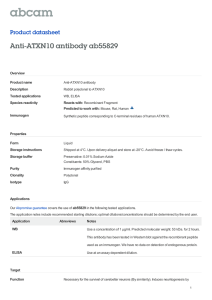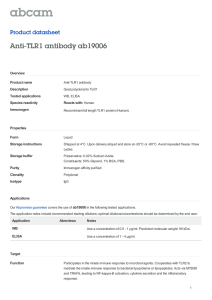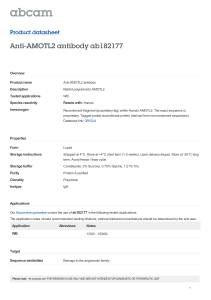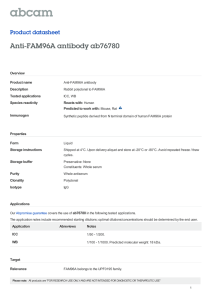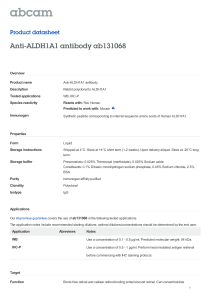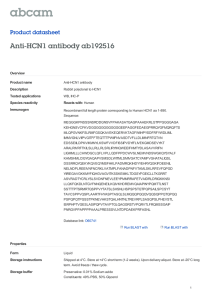Anti-Dynorphin B antibody ab192522 Product datasheet Overview Product name
advertisement
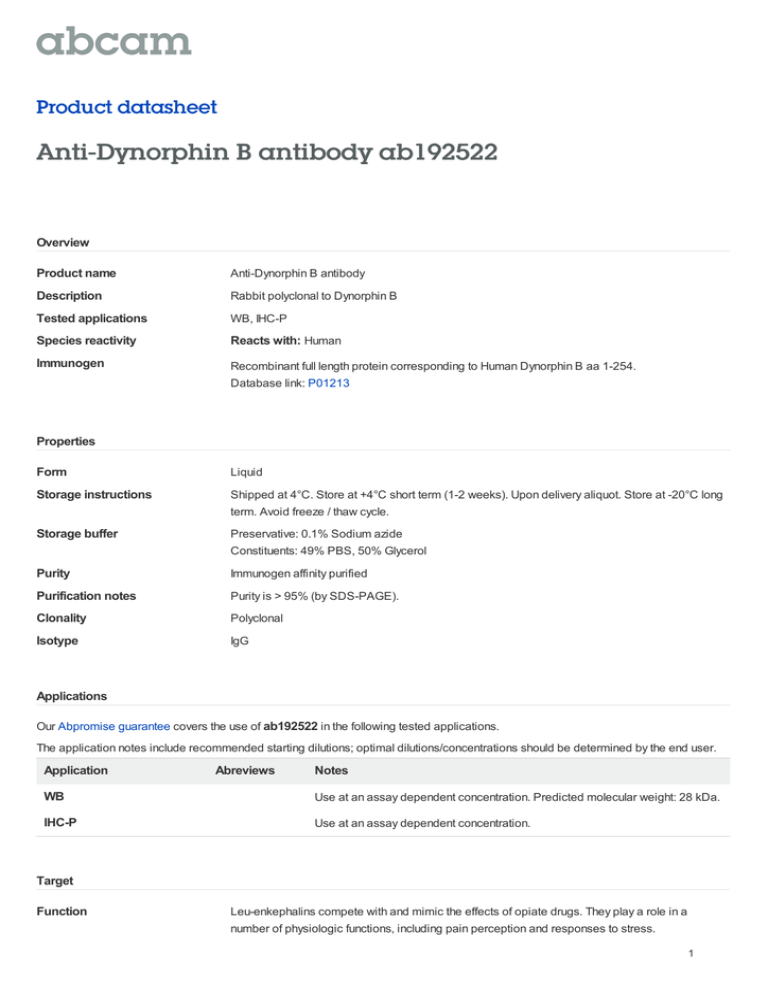
Product datasheet Anti-Dynorphin B antibody ab192522 Overview Product name Anti-Dynorphin B antibody Description Rabbit polyclonal to Dynorphin B Tested applications WB, IHC-P Species reactivity Reacts with: Human Immunogen Recombinant full length protein corresponding to Human Dynorphin B aa 1-254. Database link: P01213 Properties Form Liquid Storage instructions Shipped at 4°C. Store at +4°C short term (1-2 weeks). Upon delivery aliquot. Store at -20°C long term. Avoid freeze / thaw cycle. Storage buffer Preservative: 0.1% Sodium azide Constituents: 49% PBS, 50% Glycerol Purity Immunogen affinity purified Purification notes Purity is > 95% (by SDS-PAGE). Clonality Polyclonal Isotype IgG Applications Our Abpromise guarantee covers the use of ab192522 in the following tested applications. The application notes include recommended starting dilutions; optimal dilutions/concentrations should be determined by the end user. Application Abreviews Notes WB Use at an assay dependent concentration. Predicted molecular weight: 28 kDa. IHC-P Use at an assay dependent concentration. Target Function Leu-enkephalins compete with and mimic the effects of opiate drugs. They play a role in a number of physiologic functions, including pain perception and responses to stress. 1 Dynorphin peptides differentially regulate the kappa opioid receptor. Dynorphin A(1-13) has a typical opiod activity, it is 700 times more potent than Leu-enkephalin. Leumorphin has a typical opiod activity and may have anti-apoptotic effect. Involvement in disease Defects in PDYN are the cause of spinocerebellar ataxia type 23 (SCA23) [MIM:610245]. Spinocerebellar ataxia is a clinically and genetically heterogeneous group of cerebellar disorders. Patients show progressive incoordination of gait and often poor coordination of hands, speech and eye movements, due to degeneration of the cerebellum with variable involvement of the brainstem and spinal cord. SCA23 is an adult-onset autosomal dominant form characterized by slowly progressive gait and limb ataxia, with variable additional features, including peripheral neuropathy and dysarthria. Sequence similarities Belongs to the opioid neuropeptide precursor family. Post-translational modifications The N-terminal domain contains 6 conserved cysteines thought to be involved in disulfide bonding and/or processing. Cellular localization Secreted. Please note: All products are "FOR RESEARCH USE ONLY AND ARE NOT INTENDED FOR DIAGNOSTIC OR THERAPEUTIC USE" Our Abpromise to you: Quality guaranteed and expert technical support Replacement or refund for products not performing as stated on the datasheet Valid for 12 months from date of delivery Response to your inquiry within 24 hours We provide support in Chinese, English, French, German, Japanese and Spanish Extensive multi-media technical resources to help you We investigate all quality concerns to ensure our products perform to the highest standards If the product does not perform as described on this datasheet, we will offer a refund or replacement. For full details of the Abpromise, please visit http://www.abcam.com/abpromise or contact our technical team. Terms and conditions Guarantee only valid for products bought direct from Abcam or one of our authorized distributors 2
